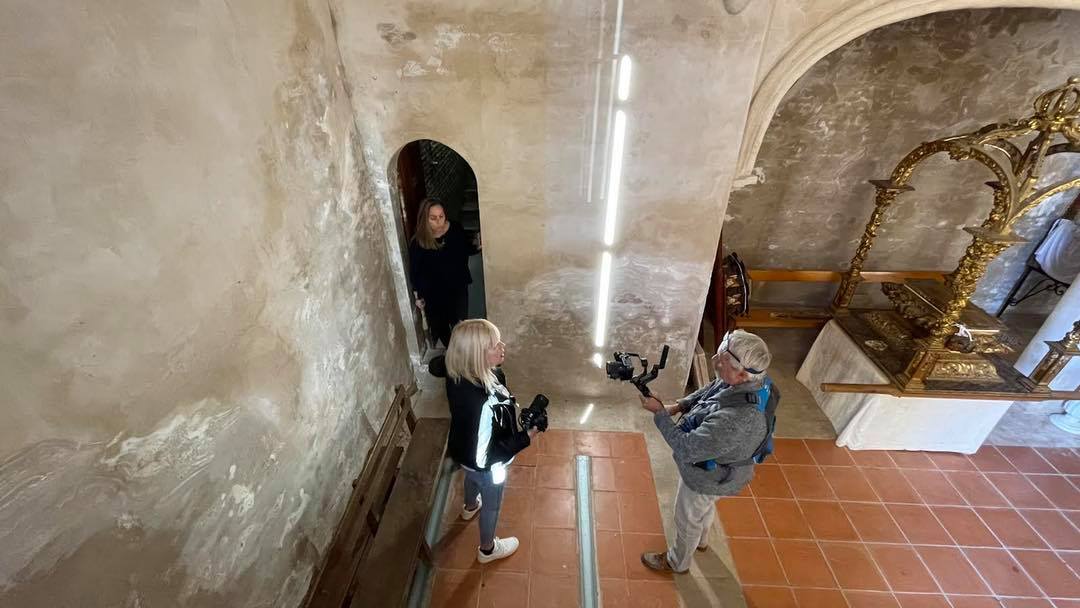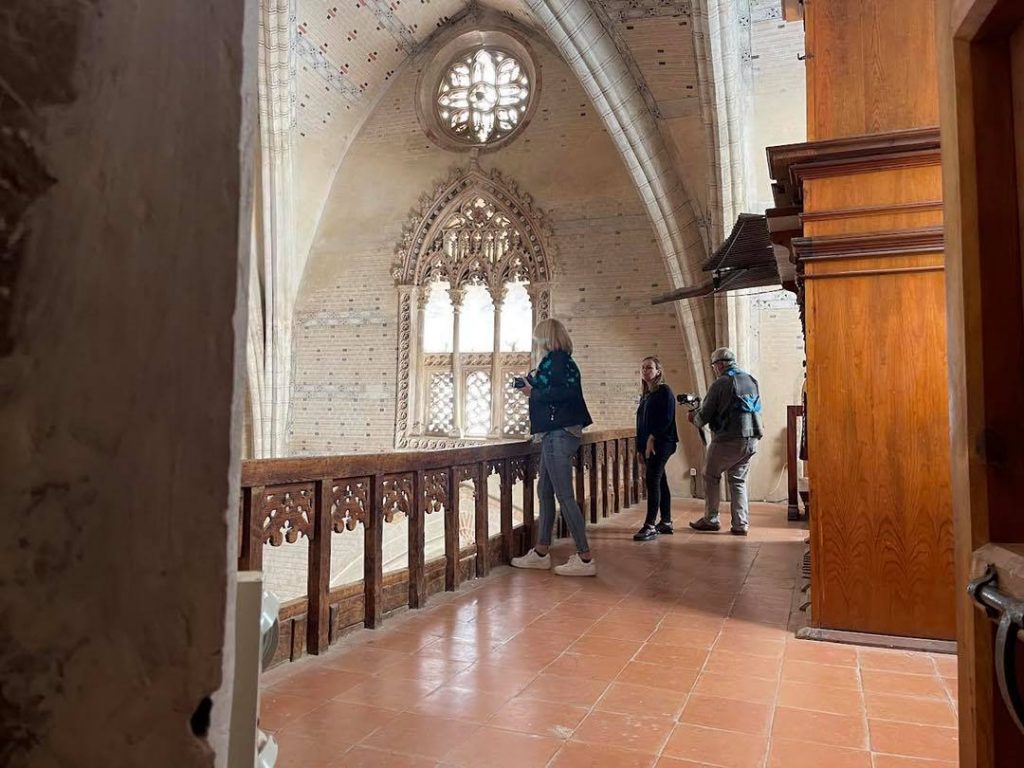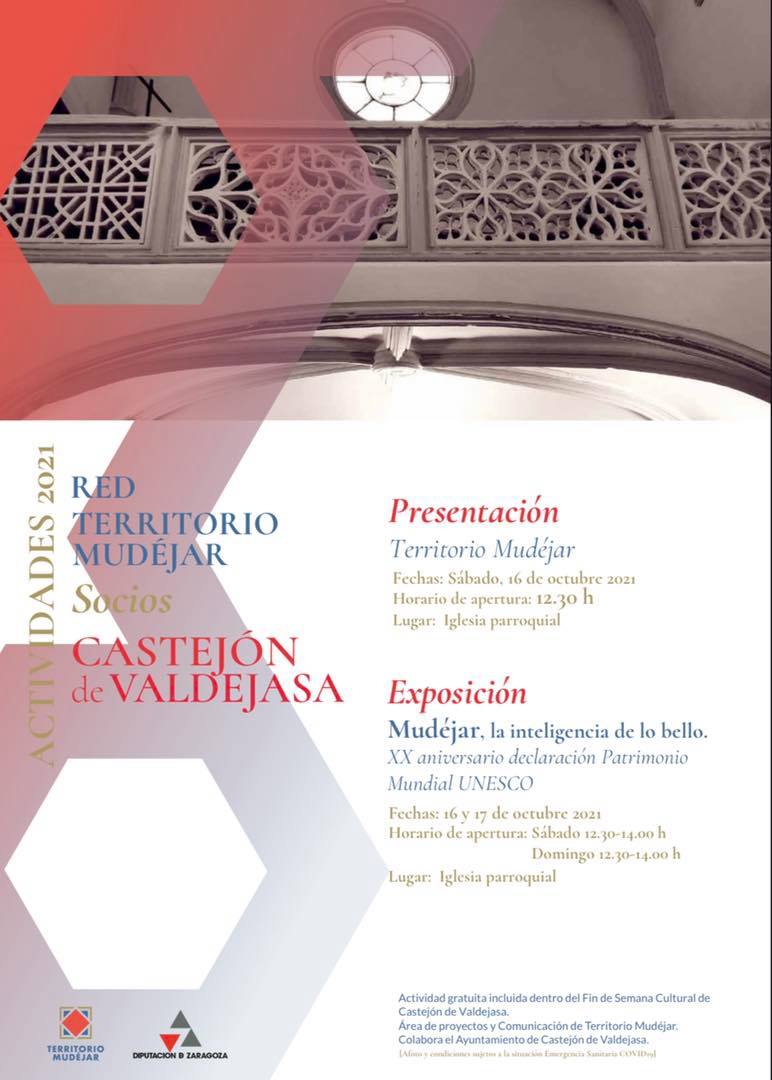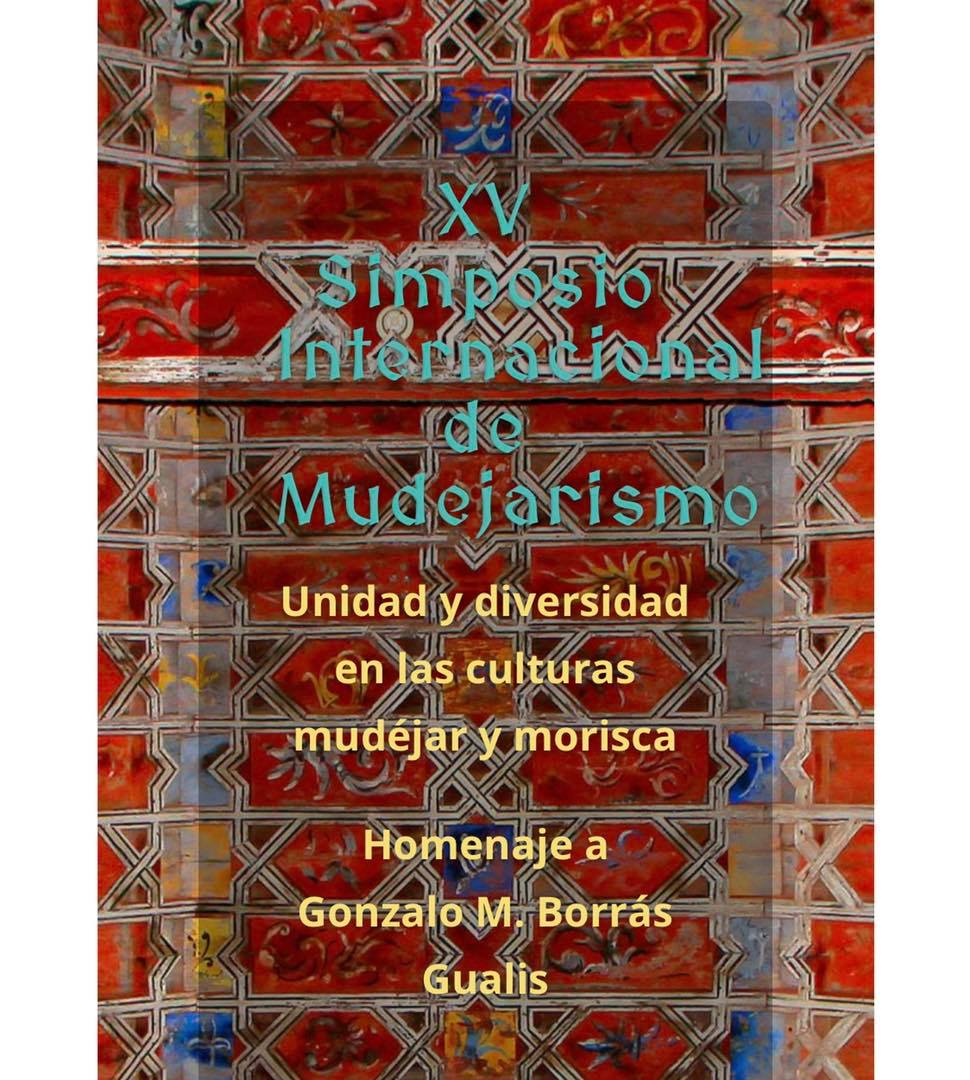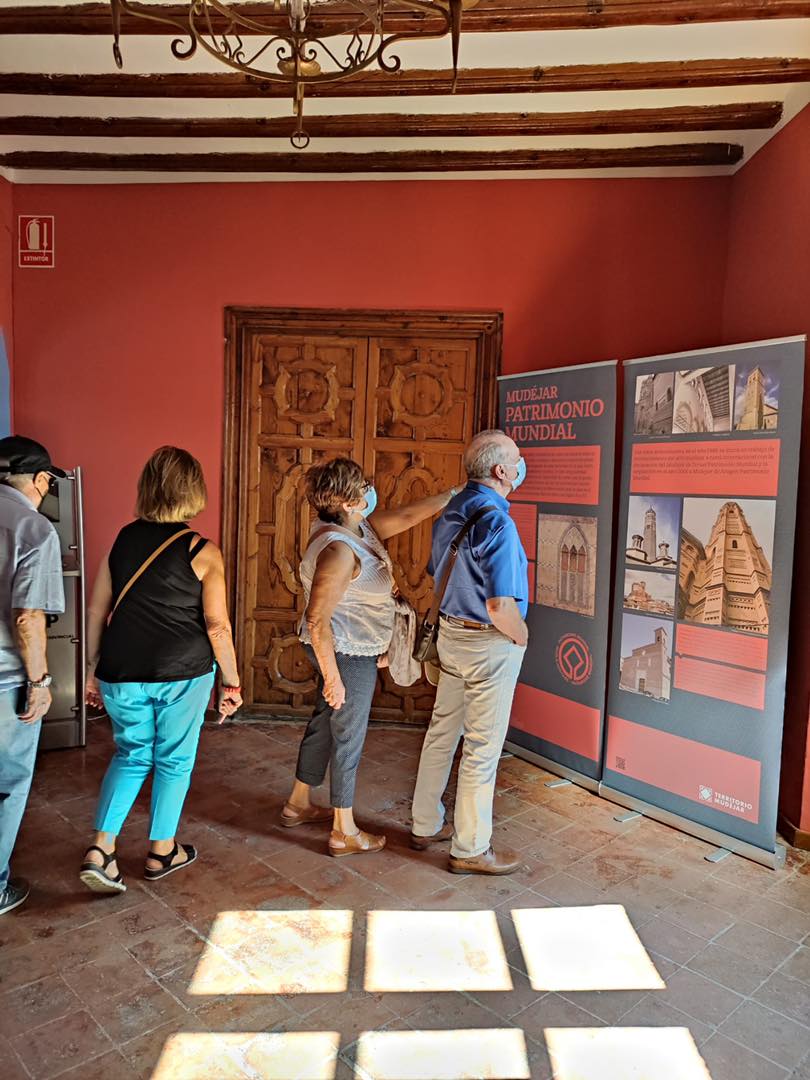These weeks we are hosting agents from Sweden, France and Italy with whom we are making specialised technical visits to selected towns in the Territorio Mudéjar such as Tobed, Cervera de la Cañada, Borja, Quinto and Torralba de Ribota, among others. The aim is for them to get to know the heritage and potential of our towns and to include them as destinations in their travel programmes.
Presentation of new members of the Territorio Mudéjar network: Castejón de Valdejasa
This year Territorio Mudéjar has incorporated three new members (Fréscano, Velilla de Ebro and Castejón de Valdejasa), which we would like you to get to know in detail.
For this reason, this weekend we are travelling to Castejón de Valdejasa, where we will hold a presentation for all the inhabitants to get to know what it means to be part of the Territorio Mudéjar network and for them to get involved in our projects. It will take place on Saturday 16 October at 12.30 p.m. in the parish church.
The activity is free of charge and is part of the events of the Cultural Weekend of Castejón de Valdejasa.
In addition, within this context, the “Mudéjar Exhibition, the intelligence of beauty. Exhibition, the intelligence of beauty. 20th anniversary of the UNESCO World Heritage declaration” arrives this weekend in Castejón de Valdejasa and can be visited until Saturday 16 and Sunday 17 October from 12.30 to 14.00 in the parish church.
This travelling exhibition will tour the different partner towns of Territorio Mudéjar and is part of the events we are celebrating on the occasion of the 20th anniversary of the declaration of the Zaragoza Mudejar as World Heritage.
Those interested will find intelligent signposting and an exhibition focused on in situ learning for all audiences.
International Symposium on Mudejarism in Teruel
Eighty international experts addressed the importance of Mudejarism at the 15th International Symposium on Mudejarism, a meeting with a record number of papers, 45, and which paid tribute to Gonzalo M. Borrás Gualis, a fundamental promoter for the recognition of Mudejarism as World Heritage and one of the great scholars and disseminators of this cultural legacy.
Territorio Mudéjar took part in this symposium, organised by the Centro de Estudios Mudéjares (CEM) of the Instituto de Estudios Turolenses (IET), of the Council of Teruel, with the collaboration of the Teruel City Council, entitled “Unidad y diversidad en las culturas mudéjar y morisca” (Unity and diversity in the Mudejar and Moorish cultures).
Specifically, Victoria Trasobares presented the paper “Territorio Mudéjar, claves para la creación de un modelo estratégico de gestión de Patrimonio Mundial en ámbito rural: las consecuencias del legado del profesor Gonzalo M. Borrás Gualis” (Territorio Mudéjar, keys to the creation of a strategic model for the management of World Heritage in rural areas: the consequences of the legacy of Professor Gonzalo M. Borrás Gualis).
In addition, together with Irene Ruiz Bazán, from the Polytechnic of Torino (Italy) and researcher of the past editions of the Territorio Mudéjar stays, she gave the presentation “El análisis de significancia como base para la realización de un plan de Conservación Preventiva. El caso de la torre mudéjar de la iglesia de Nuestra Señora de la Asunción en Terrer (Zaragoza)”.
Likewise, the researchers led by Carlos Guallart Moreno in the 2019 Stays for the project “Materiales pedagógicos para el Mudéjar” (Pedagogical materials for the Mudejar) presented the application made for its use in secondary school classrooms, the contents of which we are still working on adapting to new technologies.
A bird’s eye view of Territorio Mudéjar
To walk through our villages and contemplate them on high, from a bird’s eye view, is one of the luxuries offered by the turreted constructions that mark out the Mudejar villages, genuine and magnetic structures that define the silhouette of our Mudejar Territory.
Today we share with you a new publication in our series of itineraries that you can find in the magazine La Magia de Viajar (The Magic of Travelling).
On this route, as well as admiring the exceptional exterior decoration of the towers, we will delve into their structural evolution, a paradigm of the fusion between Islamic and Christian building traditions.
Thus, we will find three groups of Mudejar towers: of Hispano-Muslim structure, of Christian structure and of mixed structure, erected in the 16th and 17th centuries. These architectural elements tell us part of the history of the towns on which they stand.
This route of Mudejar towers offers us the experience of climbing up to the highest part of some of them to understand from on high the context surrounding the Mudejar, the urbanism of the towns, the landscape and even the communications that defined the evolution of Mudejar architecture.
In addition, we have intervened in other sections in which we have spoken about one of our research stays on models of civil heritage management, we have spoken about the initiative Rural school in motion and the Challenge programme as training in the professionalisation of heritage.
Students of the European UNITA programme in Territorio Mudéjar
Today we introduce you to Andrea, an International Cooperation student from the University of Turin who is doing her internship at Territorio Mudéjar thanks to the European programme UNITA- Rural Mobility.
“I decided to do my internship with Territorio Mudéjar because I would like to specialise in local development in relation to cultural heritage management and sustainable tourism”, Andrea explains. And then adds: “I hope that through this experience I will be able to bring useful strategies for Italian heritage management and establish future relationships”.
At the moment she lives and works in Tobed, together with the students of the Challenge project of the University of Zaragoza.
Territorio Mudéjar Routes: the keys to a style, the origins
Through La magia de viajar por Aragón (The magic of travelling in Aragon) we have invited you in past articles to take a new look to recognise the results of the rich coexistence of cultures on an urban level.
Now we present a route through towns in Territorio Mudéjar which, through its complex monumentality ascribed to different historical styles, allows us to understand the origins of the style, from the transition from fully Western languages to a new language in which the Islamic building tradition will gradually gain ground, with its particular technical solutions, its praised efficiency and an attractive and captivating aesthetic.
The route follows the chronology of the stylistic witnesses rather than the logic of the journey itself, so we encourage you to plan your visit calmly, enjoying the route and the magnificent landscape in which all these localities are located.
In this article we describe examples of Mudejar architecture in Zuera, Daroca, Calatayud, Tauste, Alagón and La Almunia de Doña Godina.
Four fieldwork grants awarded
Territorio Mudéjar, the network of 37 municipalities promoted by the Council of Zaragoza that works to conserve and promote Mudejar art in the province, has awarded four fieldwork grants for the study, the development of projects and the management of the natural and heritage resources of its member towns.
This is the third call for applications for the stays, which bear the name of Gonzalo M. Borrás Gualis as a tribute to the distinguished professor and expert on Mudejar art. Each one of them is endowed with 6,000 euros and will allow the development of responsible, sustainable and innovative research projects with a direct impact on the rural environment, favouring its visibility and knowledge.
The projects selected include projects in fields such as the creation of educational resources for primary and secondary schools, the study of Mudejar geometry in order to have a collection of images, the study of Mudejar culture in the performing arts and the conservation of popular architecture understood from the point of view of urban planning in Mudejar villages.
The aim of these stays is to favour the understanding of the rural territory from its Mudejar identity through innovative views that have a positive impact on the villages and that promote a network of work on the possibilities offered by the resources of the territory and collaborative and interdisciplinary work. In addition, specifically, the aim is to improve the knowledge of the Mudejar as a World Heritage Site and the benefits it brings as an international brand recognised by UNESCO.
The projects one by one:
1- Educational Mudejar. This project sets out the strategic lines of an educational material for primary and secondary school pupils to help them interpret the Mudejar through a combination of illustrations and real images and to learn to value this rich legacy. The resources, the result of the work process, will be available on the Territorio Mudéjar website, will be accessible through all types of devices and will have an attractive, visual and dynamic presentation. The online publication will be complemented with routes based on maps and with games adapted to the students’ level This tool will be available for use both in the classroom context and at home. The project will be developed by the cultural management professional Myriam Monterde, the audiovisual producer and scriptwriter José Manuel Herráiz and the illustrator David Guirao.
2- The Mudejar and Euclidean geometry or plane geometry. This project deals with the plastic study of the Aragonese Mudejar in the area of Territorio Mudéjar and, by extension, in the province of Zaragoza. The project will make it possible to collect and study Mudejar layouts, studying them in depth and with geometric rigour. It will also establish similarities between them or with others outside the working area. In total, around 50 graphic works will be produced, combining diverse technical exercises in brick with raised edges, ties, strapwork and round windows with interior and exterior architectural views. The result is a graphic archive never before developed which allows Territorio Mudéjar to have a collection of Mudéjar images for subsequent publications. The project will be carried out by the illustrator Chema Agustín.
3- Scenic Mudejar. Explores Mudejar art in the stage arts: music, dance and minstrelsy. It seeks to outline strategies in the territory that allow for the promotion of the Mudejar identity of the territory and to strengthen its professional networks through research, creation and artistic dissemination in the field of musical and performative art. It also aims to design actions that will enable the programming of future stage events in the region. The project is based on a concept of heritage that encompasses traditions, customs and other artistic expressions that form part of the collective memory. The project is being developed by the documentation specialist María Amor Borque and the performing arts specialist Serge Dambrine.
4- Preventive urbanism: Guidelines and tools for the protection of traditional architecture in Mudejar towns from the perspective of urban planning. This fieldwork stay proposes an analysis and comparative study of the urban planning regulations governing architectural interventions in various towns of Territorio Mudéjar, providing an overview of the degree of protection of traditional architecture derived from planning, identifying areas for improvement and proposing a framework document that can be used by both private promoters and municipal technicians to improve the compatibility of interventions in traditional constructions. This project continues the research on vernacular architecture initiated in the previous stays and will be developed by architect Laura Villacampa with the advice of lawyer Ignacio Pérez Bailón and architect Javier Gómez Patrocinio.
The travelling exhibition Mudejar 20th Anniversary World Heritage arrives in Tobed
The exhibition “Mudejar, the intelligence of beauty. 20th anniversary of its declaration as UNESCO World Heritage” has arrived today in Tobed and can be visited until 12 September from 18.00 to 20.00.
From 4 to 8 September it will be at the Town Hall.
From 9 to 11 September it will be in the Church of the Virgin, declared a UNESCO World Heritage Site.
This travelling exhibition can be visited until the end of the year in the different partner towns of Territorio Mudéjar and is part of the commemorative events that we are celebrating on the occasion of the 20th anniversary of the declaration of the Zaragoza Mudejar as World Heritage Site.
Those interested will find intelligent signposting and an exhibition focused on in situ learning for all audiences.
The exhibition project has been made possible thanks to the collaboration of Adri Calatayud-Aranda and the Leader grants from the Aragon Rural Development Programme 2014-2020.
As we have told you on other occasions, we work with Adri Calatayud Aranda on different projects. Specifically, within the “Asociación Territorio Mudéjar Centro de Innovacion rural” we have worked on the signposting and the itinerant dissemination by means of mobile boards of the recently inaugurated exhibition.
Guided routes to discover the Mudejar heritage of the province of Zaragoza begin
This autumn, Territorio Mudéjar resumes its guided tours to discover the Mudejar heritage of the province of Zaragoza in its broadest sense – monuments, urbanism, landscape, trades… – always with scientific rigour and hand in hand with professionals. The initiative “Mudejar Territory: a journey to beauty”, promoted together with the Council of Zaragoza, includes 12 routes divided into five themes: cultural fusion, the origins of the artistic style, the towers and the fortress churches. It is a journey back in time through an artistic style that was present from the 13th to the 16th century and which left a legacy that has earned some of its monuments the UNESCO World Heritage designation.
The first routes begin in September:
- The Mudejars: Mestizo Land and borderland: one through Magallón, Torrellas and Fréscano and another through Saviñán, Mesones de Isuela and La Almunia de Doña Godina. They will show how the period of fusion between the Christian, Jewish and Muslim cultures is still clearly reflected today in the country houses, urbanism and monuments of these towns.
- Keys to a style: towers. You will visit Romanos, Villarreal de Hueva, Mainar and Villar de los Navarros. These routes immerse visitors in the origins of the style and explain how the Islamic tradition gradually gained ground, with its particular technical solutions, quality and attractive and captivating aesthetics. Specifically, these routes will visit the Mudejar towers, which characterise the ‘skyline’ of the territory and are one of the most exceptional representations of this style.
- The Mudejar space: Tobed, Maluenda and Morata de Jiloca. This is a route through some of the most beautiful fortress-churches, temples of a clearly defensive style, with privileged locations, framed in beautiful country houses and integrated into the landscape.
The tours will continue in November and December.
The activities are free of charge and those interested should make a reservation in advance on the website www.territoriomudejar.es by calling 876 634 125 or by emailing rutas@territoriomudejar.es.
This initiative is part of the commemoration of the 20th anniversary of the declaration of the Mudejar of the province of Zaragoza as a UNESCO World Heritage Site.
All the information at www.territoriomudejar.es/category/proyectos/rutas/
‘Rural Erasmus’ has gone international

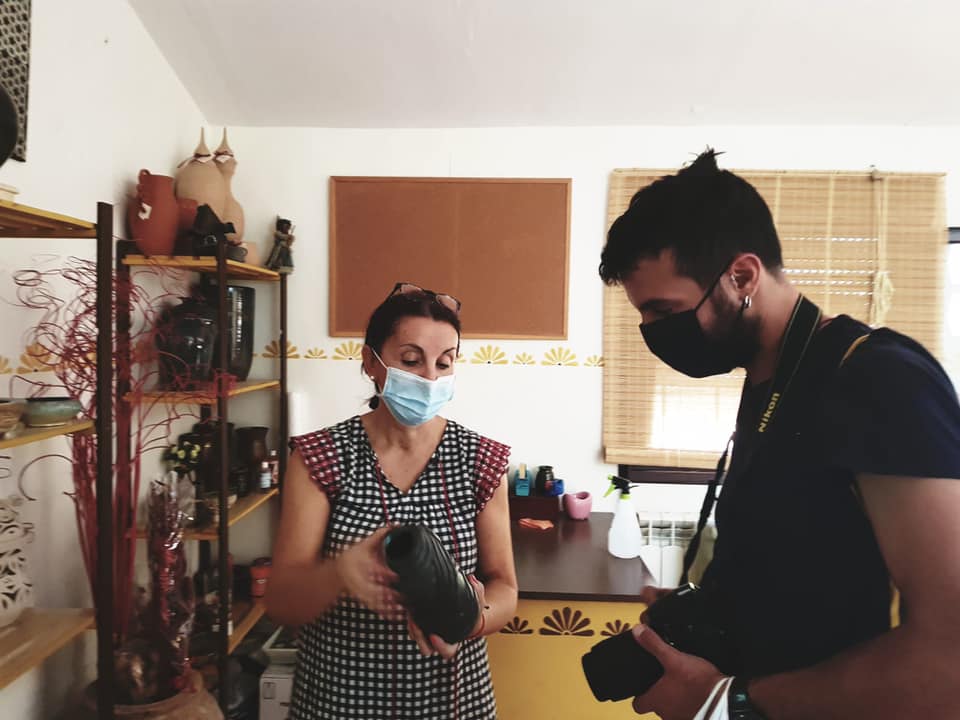
Territorio Mudéjar collaborates with the European university project UNITA- Universitas Montium in which the universities of Zaragoza; Turin (Italy), which acts as coordinator; Pau and Savoy Montblanc in France; West Timisoara in Romania, and Beira Interior in Portugal participate.
The project aims to strengthen the skills and improve the employability of university students, connecting public and private rural organisations with students who want to put their knowledge into practice.
In Territorio Mudéjar we have counted on Giacomo Pasini, an Italian student who is finishing a master’s degree in Cultural Anthropology and Ethnology at the University of Turin and who during these weeks has accompanied our students of the Challenge Programme.
Giacomo – originally from Sartirana Lomellina, in the province of Pavia (Lombardy) – is researching the impact of the climate crisis on local communities, with a special interest in the forms of adaptation and resistance to the crisis. “I work on two themes: environmental migrations and local ecological knowledge as a resource against climate change,” he explains.
Why did you choose Territorio Mudéjar for your internship? “I was interested in approaching an association that works with cultural heritage in rural areas and learning strategies to strengthen the connection between the villages that are part of the network developed by the entity”, he answers. And then adds: “I have settled in the town of Tobed together with Eugenia, Elena and Diego, and I am working with them on the different projects they are carrying out within Territorio Mudéjar”.
With this programme, we are reinforcing our Centro de Innovación Rural project through the management of heritage and the use of heritage space as a learning space.
